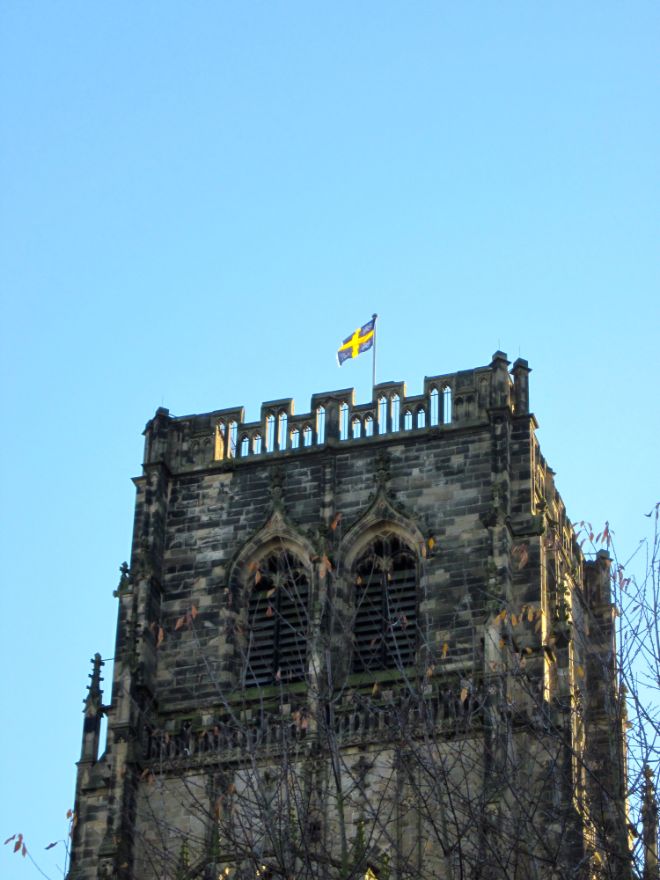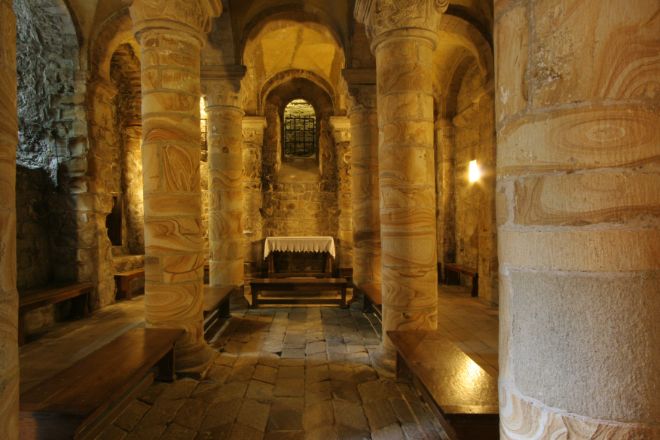 The second of our two workshops took place on Monday 24th November in the elegant surroundings of St John's College, Durham, in the Tristram Room. It was a busy weekend for Durham, Sunday had seen the service of thanksgiving for founders and benefactors of the cathedral, city and university, which culminated with a liturgical pilgrimage to the shrine of St Cuthbert. Given our focus at the Visby workshop on questions of movement within ecclesiastical space, and the discussion at the Saturday Cathedral workshop about commemoration and offering, the service was a reminder of the longevity of the subjects that we study.
The second of our two workshops took place on Monday 24th November in the elegant surroundings of St John's College, Durham, in the Tristram Room. It was a busy weekend for Durham, Sunday had seen the service of thanksgiving for founders and benefactors of the cathedral, city and university, which culminated with a liturgical pilgrimage to the shrine of St Cuthbert. Given our focus at the Visby workshop on questions of movement within ecclesiastical space, and the discussion at the Saturday Cathedral workshop about commemoration and offering, the service was a reminder of the longevity of the subjects that we study.
Alf Tore moved on then to the different issue of coin finds in female monastic churches, notably the finds at St Mary's Bergen, the Nonnesetter Abbey, which was a female house until the early 16th century when the house was given over to brothers from the order of St Anthony. Coin finds, along with needles and other offerings formed the basis for discussion, with plenty of diagrams and maps.

After lunch and a tour around the peninsula, including the Norman Chapel (one of the earliest surviving buildings in stone from the Norman period), we returned for the third session, led by Giles. This took a more textual approach looking first at passages from one of Abelard's letters of instruction to Heloise, from the later 1130s on how a strict female monastic community might operate. The extent to which the nuns under Heloise had responsibility for the running of the house, from medical matters to finances, was striking, even with the stricture of overarching male guidance. From there we turned to three texts, in different genres, on how to express the economy of salvation in the Middle Ages. Anselm of Canterbury's classic description from the Cur Deus homo was set against Book III of the Peter Lombard's Sentences, and both compared to Robert Grosseteste's Sermon 10. The role of the devil, and the articulation of the payment of sin by man to God in an increasingly monetised vocabulary is illustrated through these texts. The texts also represent different audiences, and different modes by which theological thought was disseminated within medieval society.
The workshop was a very stimulating occasion: a real treat to go through the sources for the archaeological sections in detail, and to overlay this experience with the textual survivals. We are very grateful to the staff at St John's especially to Sue Hobson, and to the Principal, Professor David Wilkinson, for use of the facilities and administrative arrangements. We hope to be back in Durham with the project, and to explore the implications of money, offerings, coin finds and the deeper questions of medieval thought on the passage of life.